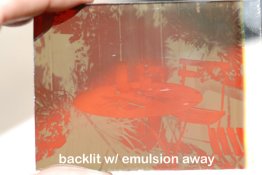Hi Ray,
I've discovered this thread only today. I'm fascinated with early color photography technologies such as Autochromes, so I'm extreemly excited to discover there was another process that seems to be even older and more accurate (color rendition wise) than Autochromes. I'm French and studied Physics for a while at College, so I would be happy to try to translate into English the french papers you cite. I'm not a professional translater and I may need some time as my free time is limited and already pretty busy but since this project sounds so exciting I'll do my best to be fast and effective.
Lionel,
This is wonderful.
Hopefully you have a lot of Stamina

I meant endurance, not multiple Stamens... I wonder if that's where "stamina" comes from

Anyway I am sorry if I was slow in responding... the last two days I have been studying electronics & learning how to hack some new commercial circuits to increase the efficiency of my own photons

Well, sorry if I left you hanging.
I will PM you soon.
To All about translations...
Yes there is a lot of material...
but my idea is that some of us have more time than money, and there are probably some of us who want to participate, & might be able to donate time, typing or translations, but not really want to make these sort of photograps....
And Google machine translation has improved, I hear.
Besides, quality depends a lot on the software... some transltion companies here run everything through machines first and start from there now.
The offer of translation was an unexpected plus.
A large task, but lets not discourage anyone from any forward movement.
One step at a time is OK.
It is a standing (if not long term) project.
Hologram, No need to apologize!
It is surlely not your fault; Sometimes the copy machines we are forced to use are poor, sometimes the publications themselves are just not robust enough to give
"nice" copies so many years down the road.
I will check the link you just gave with the list of 404s (?) to see if some can be eliminated.
By the way, thanks again for making them available in one place, in the first place.
Ray








